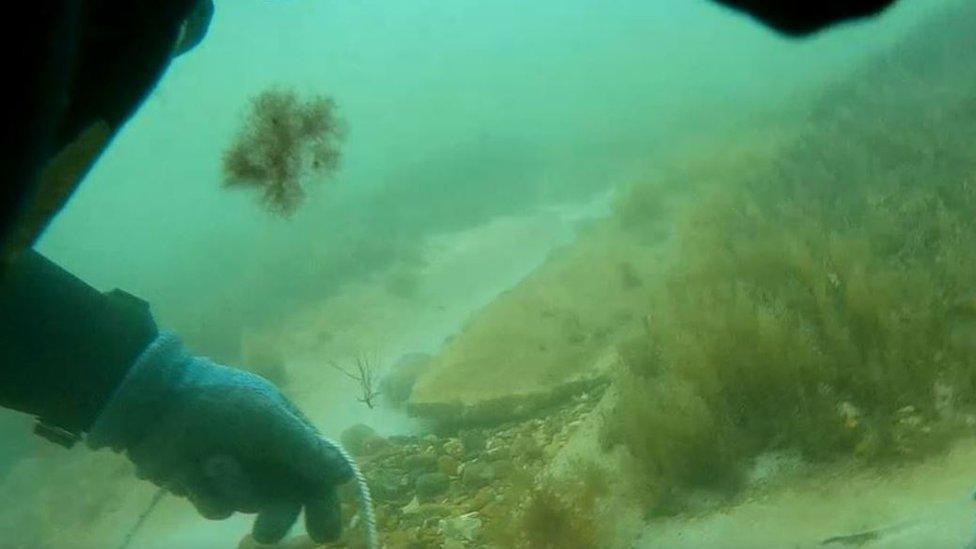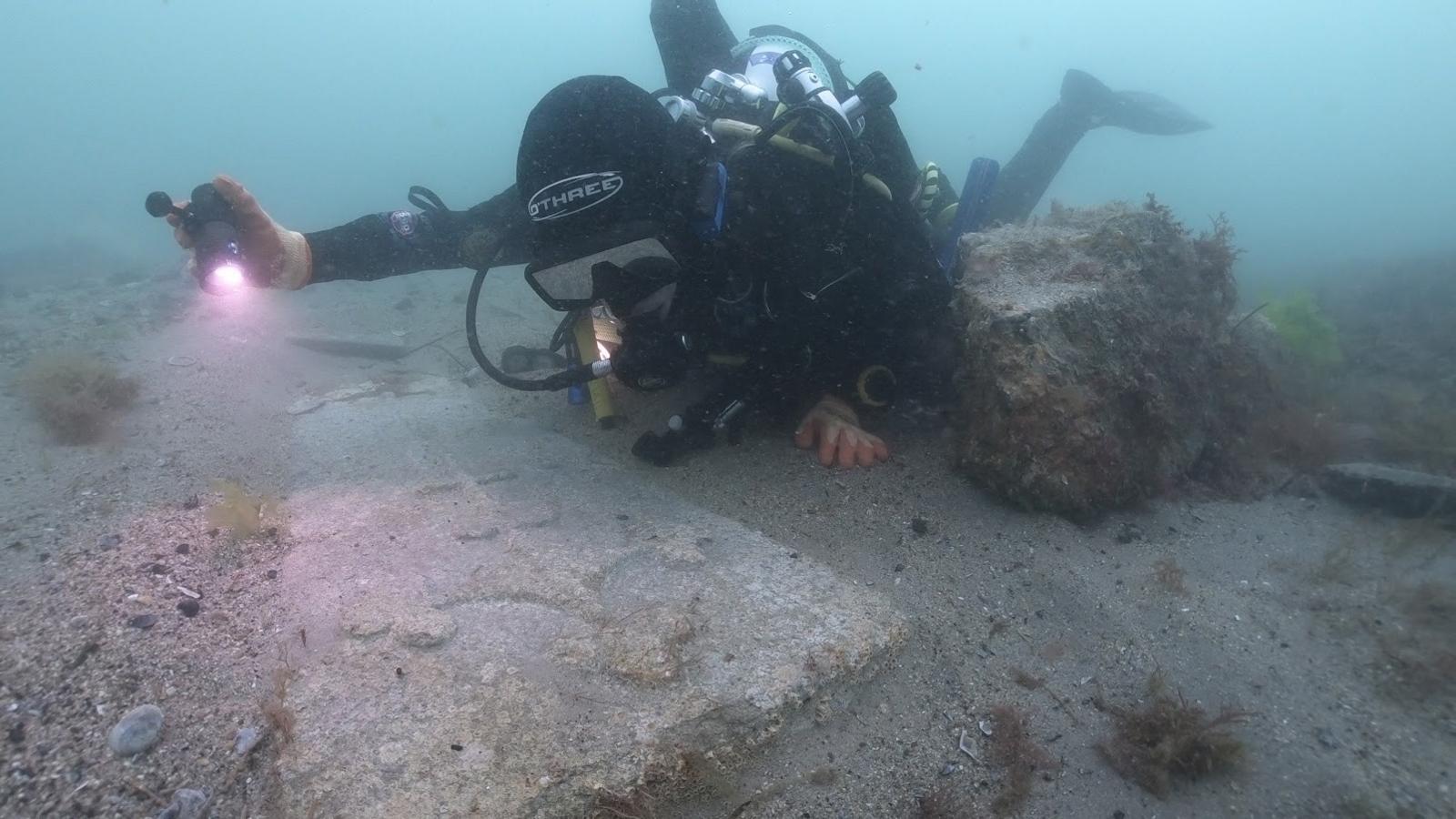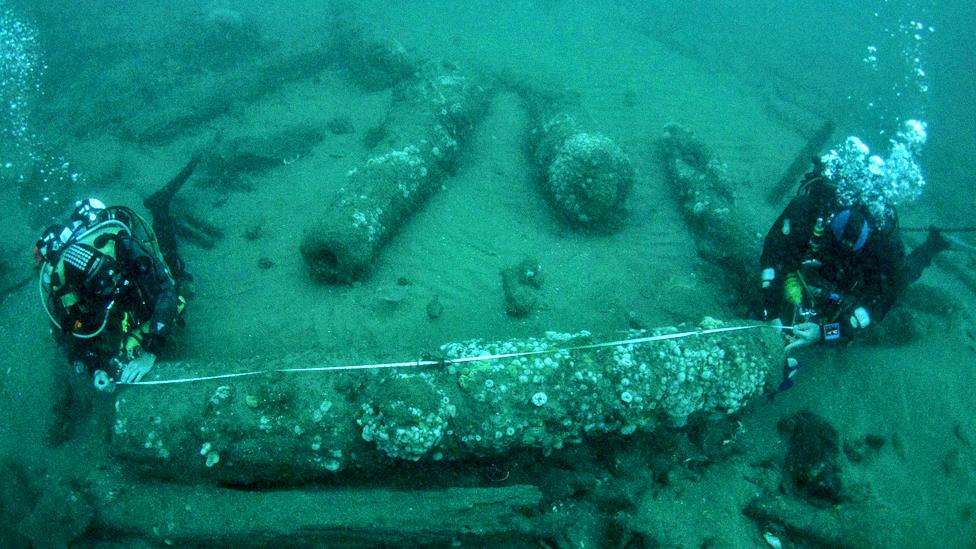Isle of Wight rare shipwrecks granted protected status
- Published

A cannon was discovered on the NW68 wreck, found off the Isle of Wight
Two "extremely rare" shipwrecks have been granted protected status.
The wrecks, named NW96 and NW68, were discovered at Shingles Bank off the Isle of Wight and dated to the 16th and 17th centuries respectively.
Both sites have been given the highest level of protection on the 2022 National Heritage List for England due to their extreme rarity.
The 240 recent additions to the list include World War One trenches and a watermill drawn by John Constable.

The newly discovered wooden wreck site known as the Shingles Bank Wreck NW96 is also located within the western Solent
Historic England's National Heritage List is a register of all nationally protected historic buildings and sites in England.
Sites included are listed buildings, monuments, protected wrecks, registered parks and gardens, and battlefields.
NW96 is thought to predate 1580 because of a lead ingot cast from a furnace, known as a bole, which fell out of use around that time.
"By listing buildings and protecting wrecks, battlefields and monuments, we can safeguard our history for future generations to enjoy as well," heritage minister Lord Parkinson of Whitley Bay said.
"Heritage sites tell the story of our country, boost tourism, and help us understand and take pride in where we live," he added.
Ships predating 1700 are "extremely rare", English Heritage said.
A network of trenches found in Norfolk has been listed and is said to be rare as other examples have long been filled in.
In the Lake District, a Grade II watermill built on a tributary of the River Derwent, near Borrowdale, in the 18th Century was also included on the list.

Follow BBC South on Facebook, external, Twitter, external, or Instagram, external. Send your story ideas to south.newsonline@bbc.co.uk, external.
Related topics
- Published20 July 2022

- Published13 July 2022
